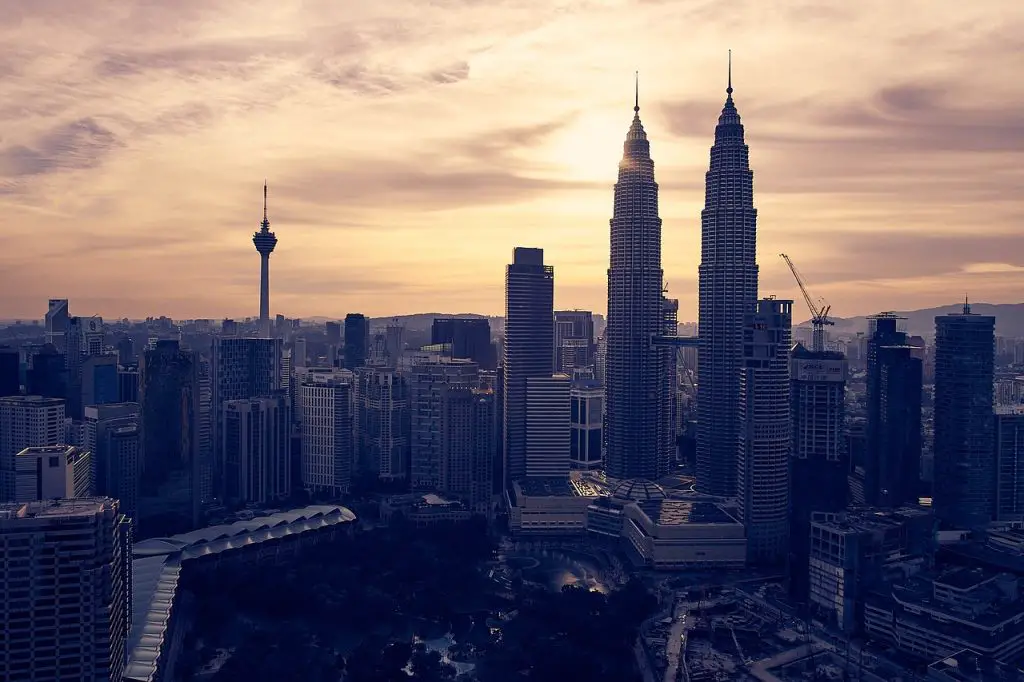Due to its almost hidden location, most would probably not notice a big white house called Rumah Sri Aman located on top of a hill in the quiet town.

Before it was called Sri Aman, the quiet town was once known as Simanggang.
Situated high on a hill, the white house was formerly known as the Government Rest House.
Before that, the double storey house served as the official bungalow of the Resident of Simanggang.

Due to its unique structure, the rest house is also known as the octagon building as it was designed with eight walls.
Perhaps one of the most famous photos ever taken at this house was a black and white photo snapped on 21st October 1973.
The event on that date also led to the town’s name being changed to what it has become known as today – Sri Aman.
What happened back then?
In the early 60s, Sarawak was exposed to a communist insurgency as there were various parties that were opposed to the formation of Malaysia.
Initially, the formation of Malaysia involved bringing in Malaya, Sarawak, British North Borneo (Sabah), Brunei and Singapore to form a country.
One of the groups opposing this formation was the North Kalimantan Communist Party (NKCP) and its military formation, the North Kalimantan People’s Army (NKPA) or Pasukan Rakyat Kalimantan Utara (PARAKU).
It was a communist political party based in Sarawak.
NKCP was also known as the Sarawak Communist Organisation (SCO) or the Clandestine Communist Organisation (CCO).
It was formed by Bong Kee Chok who was the commander and Commissar of NKCP.
He was arrested on 22nd June 1962 for protesting. After his release, he formed the NKCP in 1965 in Pontianak, West Kalimantan of Indonesia.
Sri Aman Operation
To put an end to the communist movement, Sri Aman Operation, a peace movement was formed.
The Sarawak Government’s effort in setting up the Rajang Security Command (RASCOM) in 1972 slowly gained control of the situation as well as the setting up of armed Vigilante Corps (RELA) by local residents.
Initially, NKCP received support from then President of Indonesia, Sukarno and Sarawak-based party, the Sarawak United People’s Party (SUPP).
But slowly through several counter insurgency operations, the Sarawak government began to take control of the situation.
Both Indonesian and Malaysian military forces began to collaborate in joint operations against the Sarawak communists, weakening the North Kalimantan Liberation Army.
In 1970 after elections, SUPP entered into a coalition with the Alliance Party’s Sarawak partners in the Sarawak State Legislative Assembly.
Realising that they were on the losing side, Bong realised that they needed to surrender.
Bong Kee Chok’s surrender
In his letter dated 10th October 1973, Bong wrote to the then Sarawak Chief Minister Datuk Patinggi Haji Abdul Rahman Yakub indicating his willingness to surrender.
Under the Sri Aman Operation, formal negotiations were made on 20th October.
The next day, Rahman Yakub signed a Memorandum of Understanding (MoU) at the government rest house in Simanggang.
Following the event, the first batch of Sarawak armed communists surrendered their weapons and were allowed to return to society.
The terrorists who surrendered were temporarily placed at the Protection Detention Centre for rehabilitation so that they could assimilate into the community.
On 19th March 1974, Rahman Yakub announced the success of the Sri Aman Operation at the Tun Abdul Razak Development Hall in Kuching.
After the announcement of the success of the Sri Aman Operation, a parade was held around the city of Kuching.
Rahman Yakub declared that the curfew over the entire state of Sarawak which had lasted more than 11 years was to be lifted.
The communist insurgency was finally ended in 1990 following the surrender of the remaining NKCP members under the leadership of Bong Kee Hiu, the military commander of the First Division Military Unit and Hung Chu Ting, the deputy director of PARAKU and leader of the Second Bureau Third Division Unit.
Rumah Sri Aman
After the incident, the rest house was renamed Rumah Sri Aman which means House of Peace, to commemorate the event.

It was here that a Memorandum of Understanding (MoU) was signed on 21st October 1973 by Rahman Yakub and Bong Kee Chok.
They signed in their capacities as Chief Minister of Sarawak, and Director and Political Commissar of PARAKU, respectively.
The table which was used to sign the MoU has been moved to Fort Alice for visitors to see as Rumah Sri Aman is not open to the public.




























